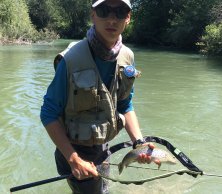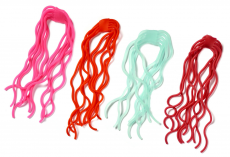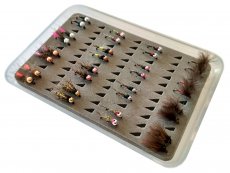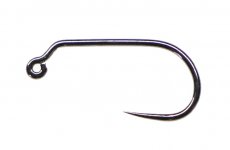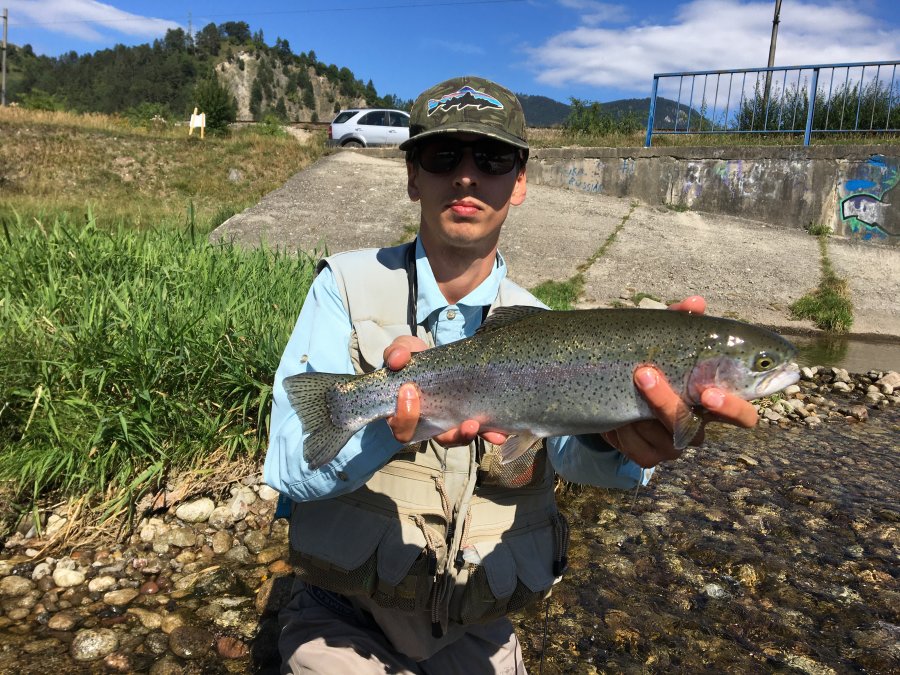A selection of ten successful flies for rainbow trout fishing on rivers in Europe.
Rainbow trout is one of our frequent catches on fly, especially from the beginning of the season, when freshly stocked fish often headlessly attack everything that falls into the water. However, as the season progresses, it is more cautious and catching it requires considerable fishing skills. Although I am of the opinion that stocked rainbow trout often harms our, especially smaller, streams, it is an integral part of sport fly fishing. Dueling with him is a real experience and you can also appreciate his meat on the dining table.
It is good that we can catch rainbow trout with all the main methods of fly fishing (dry fly, wet fly, nymph and streamer), but there are certainly flies that are more suitable for rainbow trout fishing than the others. So let's take a closer look at the types of flies that I recommend for fishing for rainbow trout.
Woolly buger
Streamer fishing is an excellent technique for catching rainbows on larger rivers. With the streamer, you can quickly and accurately map a large area of water. Another advantage is in deep fast currents, into which you would otherwise get flies in vain. The black woolly bugger with a chartrause trigger is an absolutely universal pattern for clean and turbid water and I use it very often with great success. It is successful for both freshly stocked and older fish.
Orange blob
A pattern that no still water fly fisherman can miss in the fly box. In river fishing, it is excellent for stocked fish in combination with the previously introduced pattern. Despite his irritating appearance, I must point out that orange blob surprised me even in the crystal clear Slovenian rivers on natural fish, when the fish literally went crazy after the impact of the blob into the water and followed it from a great distance.
I recommend that you tie the blob with a tungsten bead, when you can use it when nymphing.
Squirmy wormy
Squirmy worms are without a doubt the most controversial flies of recent times, many adore these patterns, while others hate them. From my personal experience, they are very effective, but not always and everywhere, and everyone should try out when their use is best. Earthworm immitations are the right weapon for muddy and deep water, in shallow water squirmy wormy can rather scare fish away. Due to its size, the fish quickly notice it in muddy or deep water and the irritating movement forces them to take a bite. For rainbow trout fishing, I like earthworms mainly in pink and red, but be sure to try other colors!
Redtag Jig
Rainbow fishing is not necessarily just about colorful irritants. In waters where there is rainbow trout, I have been using classic tungsten nymphs, which are also universal for other fish species. For me, such patterns are immortal classics as Redtag Jig or the aforementioned Sirupcik. Both patterns have a red trigger, which is irresistible for rainbows. Redtag Jig from the Lubo Roza collection directly calls for catching a big rainbow!
Sirupcik
The second highly successful tungsten jig nymph for rainbow trout fishing. I recommend all tyiers to tie Sirupcik with the popular pink color of tungsten beads, which is loved by almost all kinds of fish.
Olive Dun
Selection of dry flies for catching the rainbow trout will depend on what is currently flying around the water. Don't be afraid to use natural patterns of dry flies, which are then universal even for brown trout. From the dry flies, I chose my favorite pattern of olive mayfly on a hook size 14. Olive color is the most universal for me and I like to make the body from bodyquill, with which you will achieve a beautiful semi-transparent body.
CDC Caddis
Of the caddises, my favorite is the CDC Caddis with a pink tip, again a universal fly not only for rainbows, which due to its effectiveness is not missing in the fly box of any Czech competitive fly fisherman.
Rockerka
The last pattern among dry flies is the "Rockerka" (Rock Chick, CDC beetle). Thanks to its silhouette, it can imitate various terrestrial insects or even caddisflies. Fish can often be discarded with it, even if you do not see the activity of the fish on the surface.

Royal Coachman
I can't forget wet fly, which has recently been unnecessarily neglected at the expense of nymphing. I prefer to use the wet fly in summer, on shallower sections of rivers or in places where there are a lot of water grass, and where nymphing and streamer fishing are completely ruled out. In contrast to dry fly fishing, we can also use larger flies here, on which the fish simply hold better. A hit to the fine rod from a large fish during wet fly fishing often an unforgettable experience.
Unlike the original Royal Coachman I slightly modified the pattern to make it even more effective. The base of the fly is made of golden pheasant tails, which are indispensable for this pattern. The body is made of peacock, so I recommend to strengthen it somehow, due to the sharp trout teeth (the body can be strengthened, for example, by underlining or tying with a thin thread). I create the heart of the fly compared to the original (red thread) from red holographic tinsel, which I find more interesting. You can replace the original wing with white tips marabou feathers.
Mop fly
Finally, I will share with you another controversial fly, which, like the Squirmy Worms, comes from the US. I had the opportunity to see US junior team using it at last year's World Championships on the Vltava River, when targeting stocked rainbow trout. But they also celebrated success on natural fish. Their technique was really successful and they were catching one fish after another. They had two of these flies tied to the French leader in very bright colors (chartreuse, orange). They casted the whole set as far as possible, let the flies float in the stream and kept the flies in the stream or revived them with the tip of the rod. Contrary to our habits, they used heavier flies, which I justify by saying that these mop bodies do not fall through the column so quickly.







